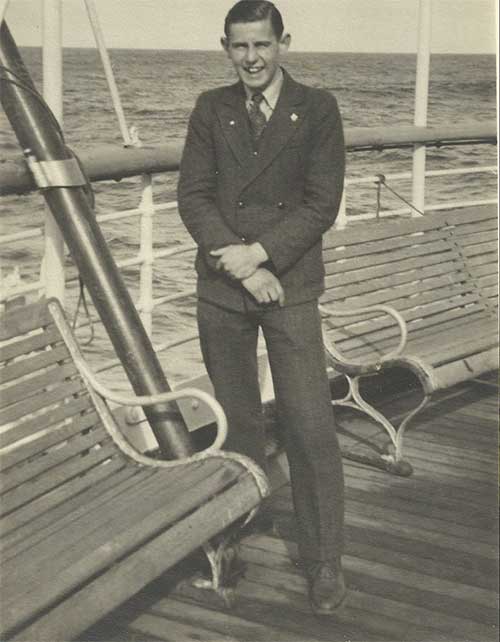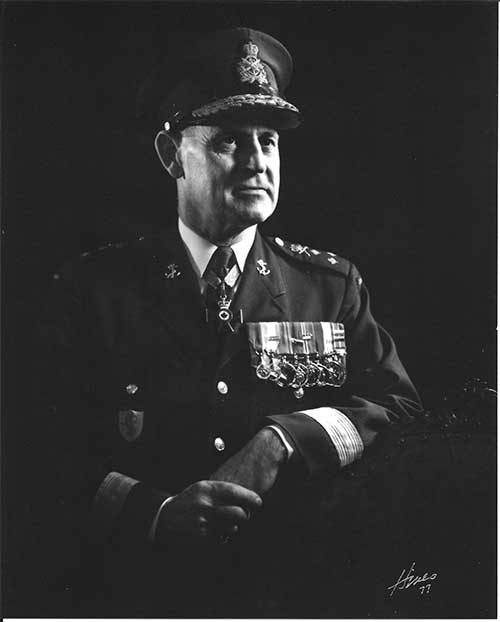Wall of Service
Column
19
Row
27
Dad’s Story
Our father, Douglas Seaman Boyle, was born November 29, 1923 in the landlocked Rocky Mountain town of Revelstoke, British Columbia. His middle name, prophetic as it turned out to be, was his mother’s family name. Susan Ann Dorothy and Allan Douglas Boyle, his parents, had immigrated to Canada from England and settled in Revelstoke just after the First World War. His older sister, Irene, and his parents seemed to have doted on bright young Doug, who before he was 12 years old had acquired a passion for the sea from reading. Admiral Nelson was his particular hero. This led him (without his parents’ knowledge) to write off to the fledgling Canadian Navy to enquire about becoming a sailor. Of course, because of his age, his parents were notified and reluctantly accepted his dream of a career in the Navy. But they insisted he qualify for officer’s training, at that time only available in England. His Revelstoke high school teachers helped him in the challenge to qualify for an officer’s training preparatory school, HMS Conwa, based in the bay off north Wales and Liverpool. In 1939, despite the Great Depression, his family managed to send him off to begin his naval training at the age of 15. At HMS Conway, he told me, he was so determined to succeed and so aware of his family’s sacrifice, that he spent too much of his time studying and preparing for entrance into Dartmouth Naval College and was several times told by teachers and training officers to “leave the books and get out and play sports and socialize!”
In 1941 he began his training at the Royal Navy’s College at Dartmouth and was soon serving as a Midshipman on British ships in the southern area of the North Sea and the English Channel. In 1943 he became a Sub-Lieutenant and in November of that year he was transferred to his first Canadian ship, HMCS Chaudiere and served in the North Sea, off Scapa Flow and in North Atlantic convoys. In 1944, as a Lieutenant, he was “mentioned in dispatches” with the citation “For good service in the destruction of an enemy submarine.” This had to do with Dad launching small boats in very rough seas to pick up German survivors. (Interestingly, Dad met one of these survivors years later when he was serving with NATO’s Standing Naval Force.)
In 1942, the ship he was serving on docked in the Firth of Forth, off Edinburgh, when he had a sudden appendicitis attack and was moved ashore to Bangour Hospital. (Bangour was a psychiatric hospital which was requisitioned by the War Office and became the Scottish Emergency Medical Hospital during WW II.) Completing her training to be a nurse at Bangour was 20 year old Janet Thomson, from the nearby mining town of Bathgate. According to Dad, he fell in love “at first sight” but he always pretended as a family joke that Mum ran after him! After he was released from hospital and returned to his ship, our Grandfather Thomson invited him and other young men serving in the war to his home for Sunday dinner on a regular basis. So Doug’s and Jan’s relationship blossomed and on April 30, 1943 they were married at St. David’s Presbyterian Church in Bathgate, West Lothian. Doug was on convoy duty a year later when his first daughter, Beth, was born in Edinburgh and by the end of 1944 Janet and 6-month-old Beth had been sent safely to Canada and the Boyle family in Revelstoke.
At the end of the War, Doug studied navigation on HMS Dryad and served as Navigating Officer on HMCS Ontario in the Pacific from 1947-48. By 1951 he was promoted to Lieutenant-Commander and served as Navigating, Training and Operations Officer on the aircraft carrier HMCS Magnificent until 1952. After two years in England (1952-54) as Liaison Officer with the Canadian Staff in London and completing the Royal Naval Staff course at Greenwich, he was promoted to Commander and returned to Ottawa as Deputy Director Naval Training.
Between 1947 and 1959 four more daughters were born and Jan moved house and family to England and back and forth across Canada as Doug’s career dictated.
The years 1957 to 1964 saw him back at sea, based in Esquimalt, B.C., where he commanded HMCS Athabaskan and HMCS Saguenay before being promoted to Captain and taking command of the seven ships of the Fourth Canadian Escort Squadron and Naval Junior Officer Training Afloat. Then it was back to headquarters in Ottawa as Director Senior Naval Appointments and Assistant to the Senior Naval Advisor to the Minister of Defence. This was followed in 1966 with promotion to Commodore and appointment as Director General Postings and Careers. It was during this period that he was very much embroiled in the implementation of the 1964 White Paper which had set in motion the unification of the three branches of the Canadian Armed Forces. It was always my understanding that Dad actually saw merit in the theory of unification, particularly in a period of limited financial resources for DND, though he was often frustrated by some of the actual implementation decisions, such as the creation of ‘the green uniform’ and the adoption of Army rank titles, seeing such relatively minor moves as destructive to the morale of the officers and men serving in all branches of the Forces. But, for a while, Dad was a Brigadier-General instead of a Commodore!
In 1969 it was back to England and the Imperial Defense College until 1970 when he became the first Canadian to command NATO’s Standing Naval Force Atlantic. This was to be his last sea command.
Back in DND Headquarters in Ottawa, in 1971-72 he was appointed Director General Personnel Requirements and Policy. Following his promotion to Rear Admiral in 1972, he became Chief of Personnel of Canadian Armed Forces, responsible for all matters relating to Military and Civilian members of the Defense Department. During this time of military spending cutbacks Dad gained a reputation for speaking his mind. At the same time that he was using his best judgment to make the required changes to military personnel, he did not hold back his criticism of political priorities concerning the Canadian Forces.
In 1973 he was appointed Commander of Maritime Command in Halifax – out of Ottawa, back on a seacoast. He entered the Command on a mission to effect change. Under his leadership the Command came to life. He quickly pulled together a team to help him develop a strategic plan for the future of military operations in Canada. This included an unprecedented re-organization of the Command structure, laying the groundwork for a new air and ship program, and both east and west coast dockyard re-development plans to support the future of this new military operation. As the plan developed Dad became more and more vocal concerning military needs in Canada and more and more critical about the lack of political commitment. Though his outspokenness caused embarrassment in Ottawa, he was respected for his commitment to the cause and the logical expression of his ideas. In 1975 he was promoted to Vice Admiral and awarded a CMM (Commander of Military Merit). In 1977 he was appointed a Member of the Hospitaler of St. Lazarus of Jerusalem. In addition to these honours our family preserves the 10 military medals he earned throughout his long naval career.
In 1977, with a new Chief of Defence Staff in place, change was in the air and Dad’s strong views were no longer going to be tolerated. He was offered a research position at Headquarters that he knew was really a ploy to cut him off from direct contact with the men and service he believed in – and thereby silence his outspoken attacks on Ottawa’s neglect of the Armed Forces. So with enormous sadness after a lifetime of service to his country, he tendered his own formal resignation at age 54 and entered retirement. Though his career ended, his passion for Canada’s military and personnel never did end. He continued to do what he could as a civilian to help servicemen who appealed to him and to present his honest perspective on military and public affairs when approached by the media and as a public speaker.
After years of long hours and hard work the early years of retirement were not easy for Dad, but he and Mum started out enthusiastically to renovate a lovely but rather neglected 200-year-old farm in Mill Village, Nova Scotia and Dad took on fund raising for the Isaak Walton Killam Hospital for Children in Halifax. In the fall of 1980, they moved to Ottawa, back to Bell’s Corners and the community they had enjoyed in the late 1960s. There followed fifteen years of welcoming grandchildren and celebrating 40th and 50th wedding anniversaries before Janet passed away in 1995. Dad never really got over this loss but was able, finally, to share the house with another St. Bernard dog – he had had one as a boy in Revelstoke and always said he’d love another but Mum was less keen with 5 growing daughters and all those moves!
Dad died in 2001 after another great battle, this time with mesothelioma, which he believed he had contacted during his years onboard ships with asbestos insulation wrapping their pipes. (Ironically, he had been instrumental in having this harmful substance removed from ships during his time in Maritime command.)
He was a man of great passion and commitment not only in his career, but also in his family. These characteristics live on in our memories.
(Dad’s Story was written by his eldest daughter Elizabeth with input from his other four daughters, Isobel, Heather, Margaret and Patricia.)

